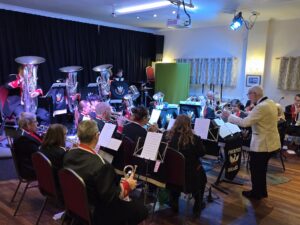
Farming has been an integral part of life in Lambourn since Neolithic times. Originally the downland and countryside surrounding Lambourn would have been heavily wooded. The early farmers used clearings and small patches of open land to plant their basic crops. Gradually the trees have been removed in order to create the countryside we see today. This created fields separated by hedgerows and interspersed by small copses of wood.
Despite the relatively thin layer of top soil which lies above the chalk, it is possible to grow a large number of different cereal crops. Wheat, barley and oilseed rape are among the most popular crops planted in the Lambourn Valley.
Many fields turned to grass and are used to support flocks of sheep, and animal ideally suited to the well-drained downland soils.
Throughout the last hundred years farming in the Lambourn Valley has coexisted with the racing industry, sharing paths, tracks and land in a spirit of collaboration of two land-based industries both critical to the industry and employment in the Lambourn Valley.





